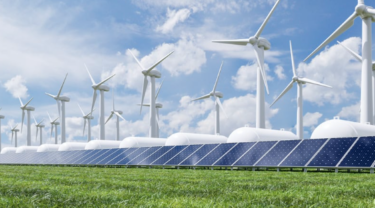The economic contribution of the US nuclear power industry
Commissioned by the Nuclear Energy Institute

The US nuclear power generation industry provided approximately 19% of the electricity output of the electric power sector in 2022. To generate this electricity, the nuclear power industry directly employed 73,832 workers, including 48,252 employees working at nuclear power plants themselves. But the full economic contribution of the nuclear power industry extends further. Altogether, the total (direct, indirect, and induced) economic contribution of the US nuclear power industry in 2022 totaled 256,849 workers and $63.8 billion of GDP. This activity generated $15.9 billion in federal, state, and local taxes.
The states with the largest economic contribution from nuclear power were Illinois ($5.9 billion in GDP), Pennsylvania ($4.8 billion), South Carolina ($3.9 billion), and California ($3.6 billion). On average, each of the 52 US counties which house the nation’s 54 nuclear power plants had 1,758 workers whose job was supported by nuclear power, and an average GDP contribution from nuclear power of $770 million.
Nuclear power has a number of positive sustainability characteristics. Unlike electricity generated by burning fossil fuels like gas or coal, nuclear power generates no significant emissions of air pollution. Nuclear power’s land use footprint is the smallest of any electricity generating technology, less than one-fiftieth that of ground-installed solar, and one three-hundredth that of on-shore wind, per unit of electricity produced. Working at a nuclear power plant is one of the safest jobs in America, with zero fatal accidents since 2017, and a rate of non-fatal accidents one-seventh that of the electric power industry as a whole.
The experts behind the research
Our Economic Consulting team are world leaders in quantitative economic analysis, working with clients around the globe and across sectors to build models, forecast markets and evaluate interventions using state-of-the art techniques. Lead consultant on this project was:

Dan Martin
Lead Economist, Economic Impact
Tags:
You might be interested in

Installation Costs & Lead Times: Oxford Economics’ Energy Infrastructure Study
Explore the 2025 IASR on cost escalation factors for renewable energy in Australia. Understand the challenges and solutions for a sustainable energy transition.
Find Out More
Australia’s Construction Outlook: Market capacity challenges to continue
Although growth has slowed, rising construction work this decade requires a laser-like focus on improving productivity and skills accumulation
Find Out More
The Long Road to Growth: Construction Productivity in Focus
The construction industry is a critical sector of Australia’s economy, literally shaping the homes, workplaces, and infrastructure that define our cities and communities.
Find Out More
Oxford Economics’ WACC Methodology Informs Australia’s Green Energy Transition
Uncover the critical role of investment analysis in Australia's energy sector. Gain insights into cost of capital benchmarks for evaluating diverse energy projects.
Find Out More